List of Tenderness Different Cuts of Beef
1 / 16
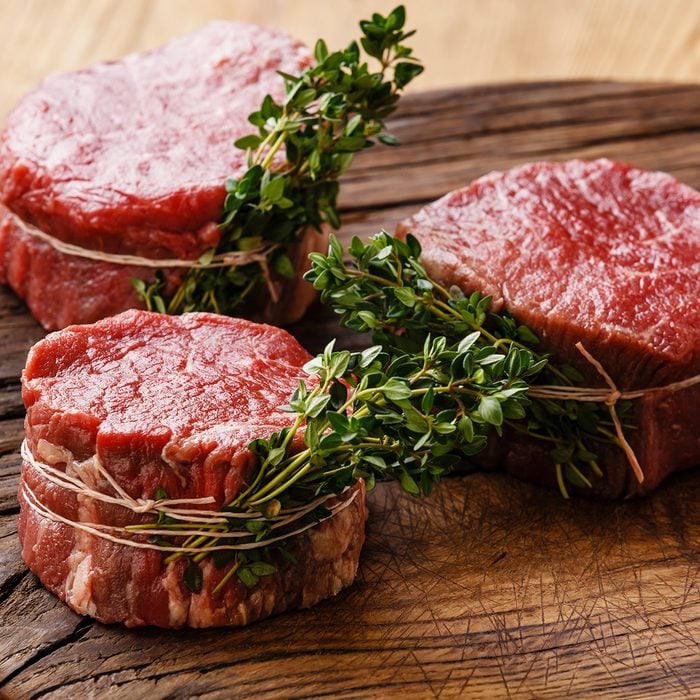
Filet Mignon
Filet mignon is the name of the steak cut from the beef tenderloin, a long, cylindrical muscle that runs along the spine. It's one of the most expensive cuts of beef because the muscle doesn't get much work, and it's so tender you could cut through it with a fork. Because they're already tender, they don't require a marinade, so try pairing the steak instead with a flavorful sauce or butter like in merlot filet mignon.
How to Cook It: The steaks have almost no fat content, so you definitely don't want to overcook them, or they will dry out. Simply dress the filet up with salt, pepper and any herbs you like. Then, cook it in a cast-iron skillet until it reaches a rare or medium-rare temperature. Learn more about how to cook steak in a cast-iron skillet.
2 / 16

Ribeye
The ribeye is the juiciest, most marbled steak. It's cut from the center of the rib section and sold as bone-in or boneless steak. Ribeye has more flavor than a filet mignon, but it's also slightly chewier. This is a pretty forgiving steak to cook because it has so much intermuscular fat; overcook it slightly, and it will still taste juicy. When shopping, look for ribeyes with good marbling and a nice fat cap on the top. If you like ribeye, don't forget to try prime rib, which is also cut from the rib section.
How to Cook It: You won't need to marinate this steak because of its fat content, and we like using a simple salt-and-pepper rub that doesn't cover up the beefy flavor. Cook ribeye over dry heat—like a grill or a cast-iron pan—until it reaches your desired temperature. Try this recipe for peppered ribeye steaks that enhances the steak's natural flavor without covering it up.
3 / 16
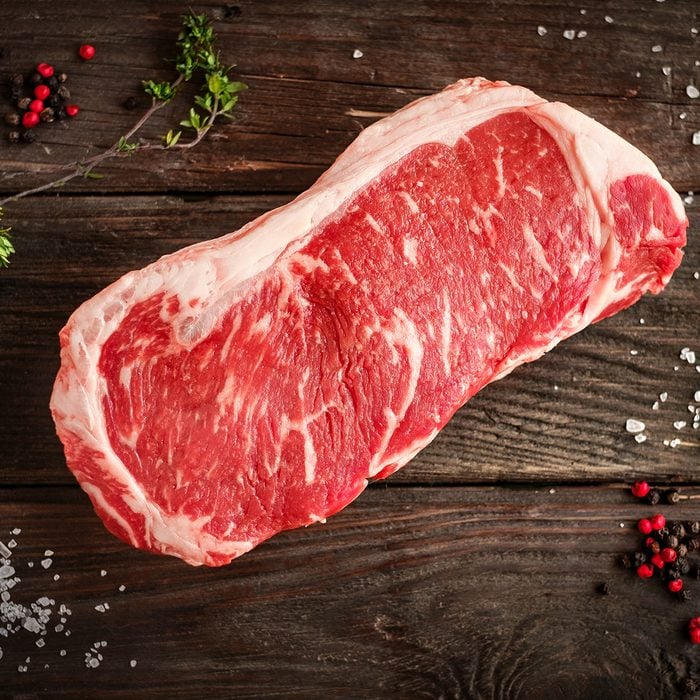
Strip
The strip steak—also known as a New York strip—is cut from the short loin. It has less fat than a ribeye but more flavor than a tenderloin and is almost always sold as a boneless steak.
How to Cook It: Prepare a strip steak the same way you would a ribeye: seasoned with salt or a dry rub, and cooked over dry heat like in this cast-iron skillet steak recipe. These steaks taste best in the medium-rare to medium range. Learn how to cook a medium-rare steak.
4 / 16
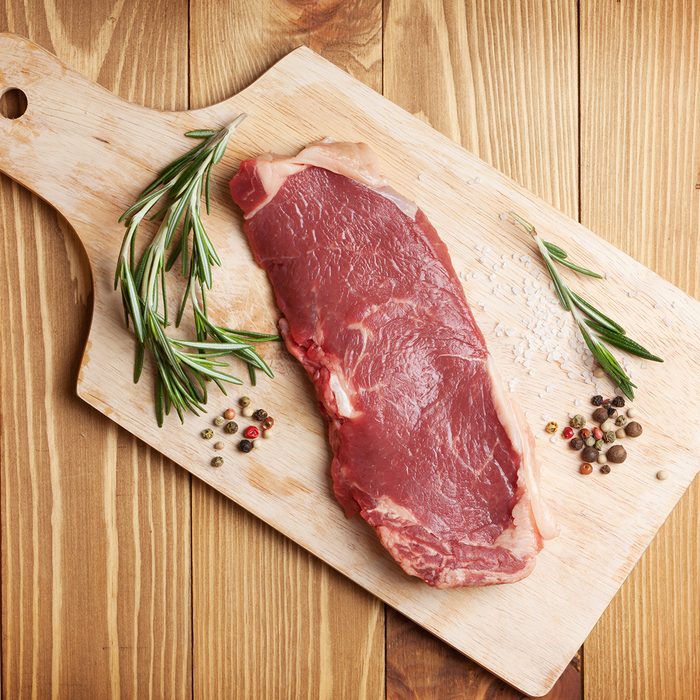
Sirloin
Sometimes called top sirloin, these boneless steaks come from (you guessed it!) the sirloin section, near the rear of the animal. Some people say they're neither tender nor flavorful, but we disagree; sirloin steaks have a very pleasant beef-forward flavor, and their inexpensive price tag makes them affordable for weeknight dinners.
How to Cook It: Because the sirloin doesn't have much fat or intermuscular marbling, you'll want to take care not to overcook it. Any temperature over medium will taste dry. These steaks taste fantastic when dressed up with a dry rub in recipes like zippy sirloin steak.
5 / 16
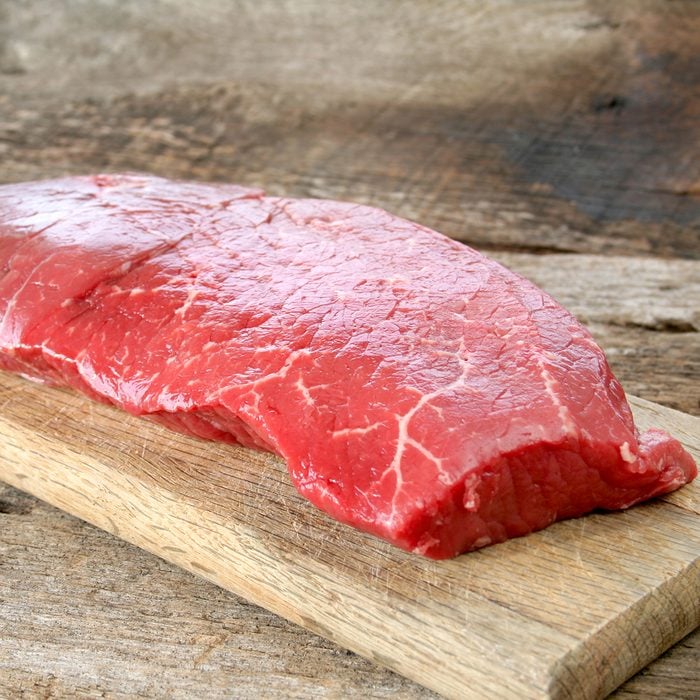
London Broil
Technically, London broil is a cooking method, not a cut of beef, but many grocery stores sell steaks by this name. It's usually a top round steak cut from the hindquarters of the beef, but you might want to double-check with the butcher because sometimes flank steak is sold under this name.
How to Cook It: It's best to marinate these steaks with an acidic ingredient to help break down the tough muscle fibers. Then, flash-sear them in a hot pan or on the grill. Overcooked London broil can be tough and chewy, so we recommend keeping the steak in the medium-rare to medium range. Then, cut the steak against the grain after resting. These steaks are also a great choice for homemade beef jerky.
6 / 16
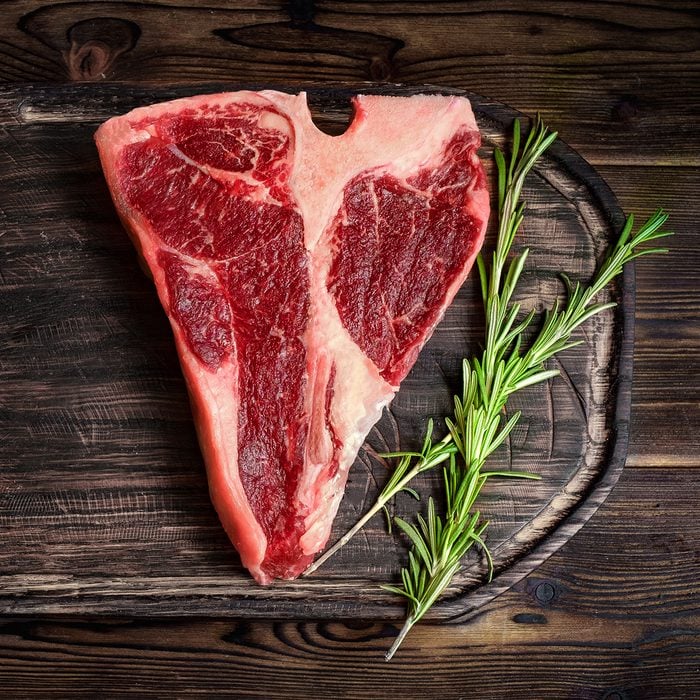
T-bone or Porterhouse
These "T-shaped" steaks are a favorite of meat lovers because they actually contain two steaks: the strip and the tenderloin. They're cut from the short loin and are always sold on the bone. The major difference between a T-bone and a porterhouse is that the latter is generally cut from the back of the loin, and it contains a larger portion of filet mignon.
How to Cook It: Cook these steaks over dry heat as you would a strip loin, using a meat thermometer if you need to make sure the thick steak cooks through. After it rests, cut the meat from the bone in two pieces, slicing each one perpendicular to the bone. Then, replace the slices around the bone so it looks like a whole steak for presentation purposes. Try this trick when making T-bone steaks and burgundy mushrooms. Together, they make a perfect, pretty pair.
7 / 16
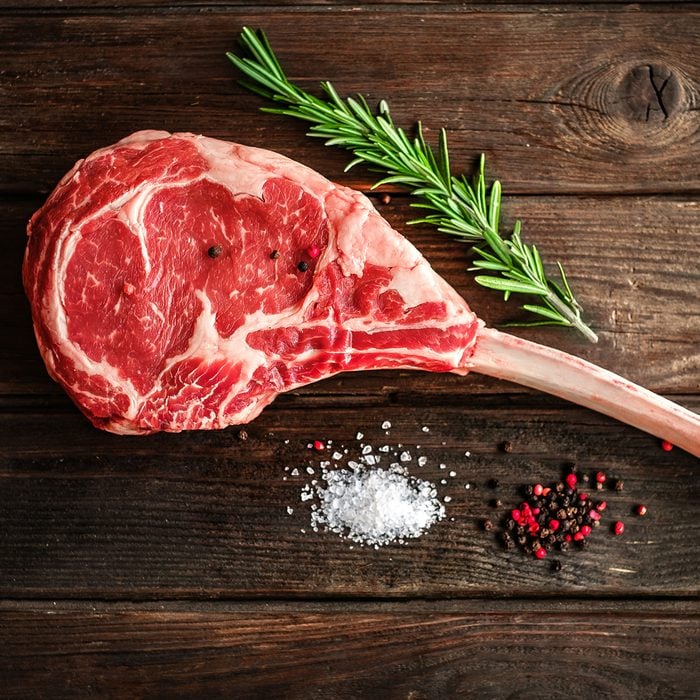
Tomahawk
This Flintstone-looking cut is basically a ribeye steak that wasn't cut off of the rib bone. Its thickness depends on the thickness of the bone, but they're generally in the neighborhood of two inches thick. They also weigh enough to feed several people!
How to Cook It: They look intimidating, but you just need to know how to cook a thick steak to pull it off. It's best to sear a tomahawk steak in a cast-iron pan or over the hot side of the grill. Then, finish cooking them in the oven or on the indirect heat side of the grill. If you like cooking steak on the grill, find your favorite of our top grilled steak recipes.
8 / 16
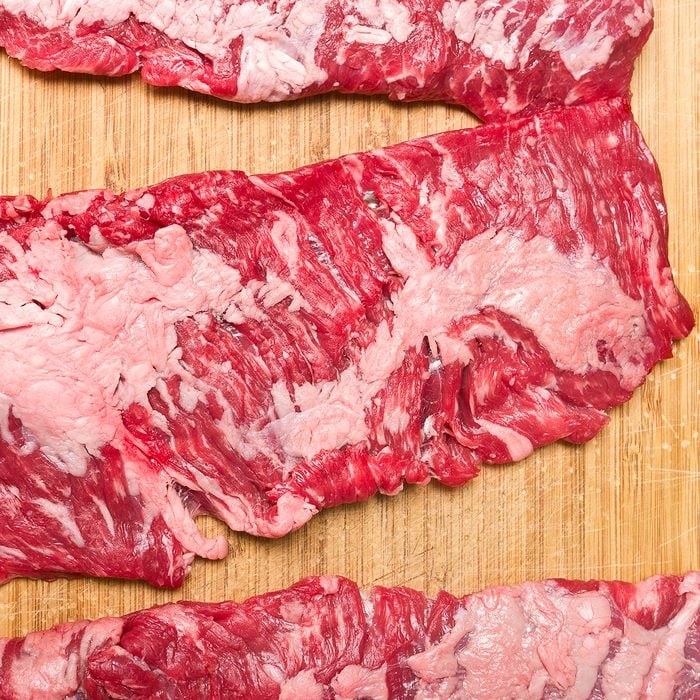
Skirt
The skirt steak is a long, thin muscle cut from the plate section of the belly. It's a very tough cut with a lot of connective tissue, but it turns out juicy and tender if cooked correctly. You can find both inside and outside skirt steaks, and most butchers take care of trimming off the thick, outer membranes before selling them.
How to Cook It: It's best to marinate a skirt steak in an acidic marinade like the one in this grilled skirt steak with red peppers and onions recipe for at least 30 minutes before cooking it. Then, flash sear it over high heat and serve it medium-rare to medium. It's important to cut the skirt against the grain to avoid chewy bites. If you have any leftovers, make sure you know how to reheat steak properly.
9 / 16
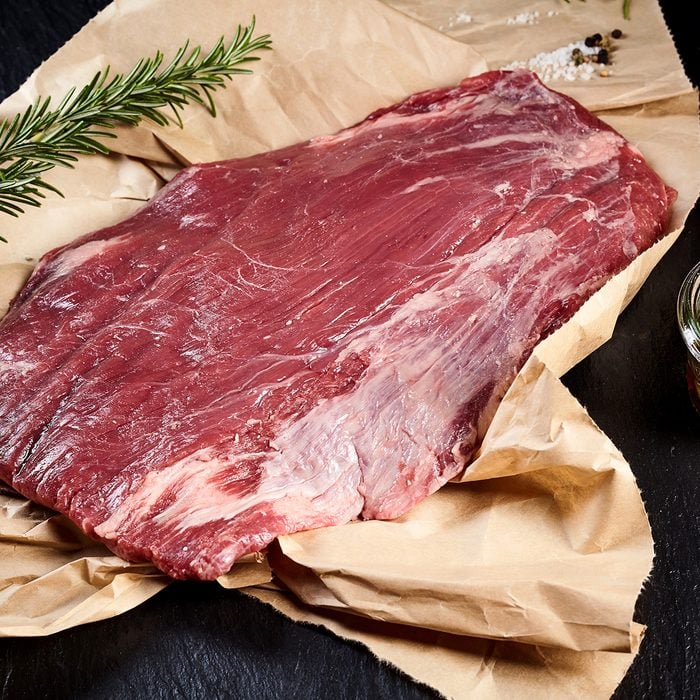
Flank
Flank steak is similar to skirt, but it has a few characteristic differences. It comes from the belly, but the flank section is further back towards the beef's rear. It's thicker and wider than the skirt, and it cooks up slightly more tender.
How to Cook It: Like skirt steak, it's best to use a flavorful marinade (for example, the marinade in this grilled tender flank steak has soy sauce, lemon juice, honey and garlic) and cook flank steak over high heat. It can become tough when cooked over medium, and we think it tastes best at medium-rare. For the best eating experience, thinly slice flank steak against the grain. Work more flank steak recipes into your weekly meal plan!
10 / 16
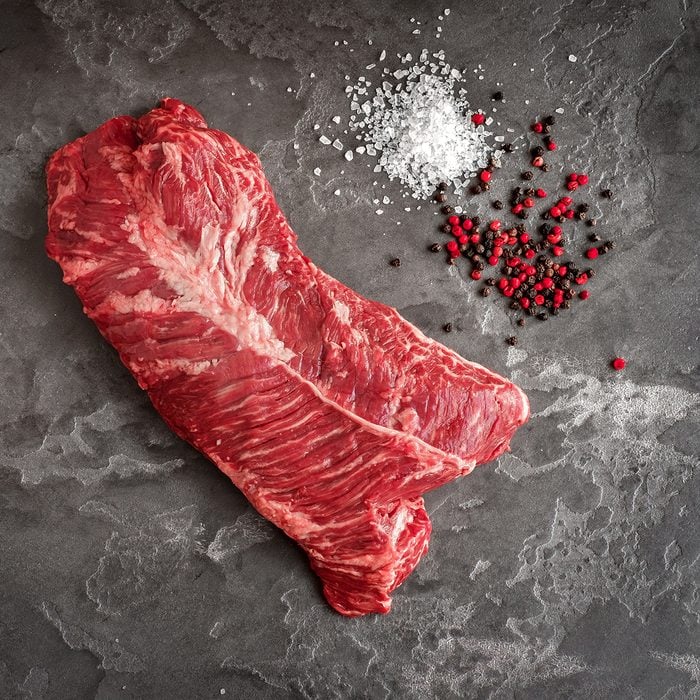
Hanger
Hanger steak is one of the best cuts of beef you didn't know you could ask for. It's relatively inexpensive and has a super beef-forward flavor. It comes from the plate or belly section of the cow, but it's not connected to any bones. (It hangs from the diaphragm, hence the nickname "hanging" steak.) If you're buying a whole hanger, ask the butcher to remove the thick, inedible membrane that runs down its center.
How to Cook It: Like skirt or flank steaks, hangers benefit from a marinade with a strong acidic component. Cook it over high heat and be sure to cut against the grain before serving. You can cook hanger to medium-rare, but we think it tastes best at medium temperatures.
11 / 16
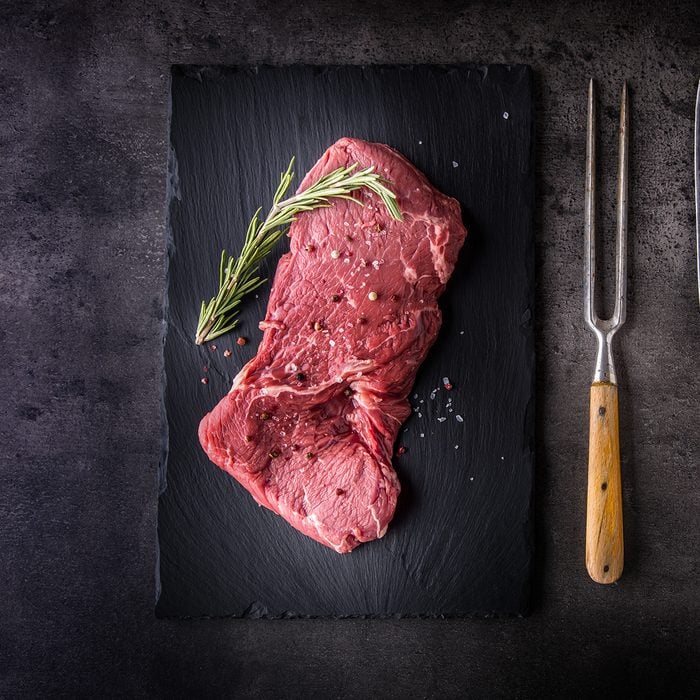
Rump Steak
Rump steak (sometimes called round steak) is an inexpensive alternative to ribeye, and it tastes great if you cook it correctly. It comes from the hindquarters of the cow, so it's lean like sirloin. Because these muscles see more work, the rump is less tender than most of the cuts on this list.
How to Cook It: It's definitely best to marinate a rump steak for a least four hours, and we recommend cooking these steaks in a cast-iron pan. After searing the steak until it reaches a medium temperature, keep it juicy by letting it rest for at least 15 minutes. Then, slice it against the grain. Or, try it in the slow cooker, like for this Asian-style steak recipe. If you need a reminder, here's how to sear steak in 5 simple steps.
12 / 16

Denver Cut
The Denver cut is my new favorite steak. It's cut out of the eye of the chuck, which runs along the front shoulder. This section is typically very tough and not well-suited for steaks, but because the Denver is located in the center, it sees very little exercise. It's marbled like a strip without all the excess fat (or high price tag).
How to Cook It: These steaks cook exceptionally well using sous vide, or cooked on the indirect side heat of the grill before being reverse-seared at the end. They taste best at medium-rare to medium temperatures.
13 / 16
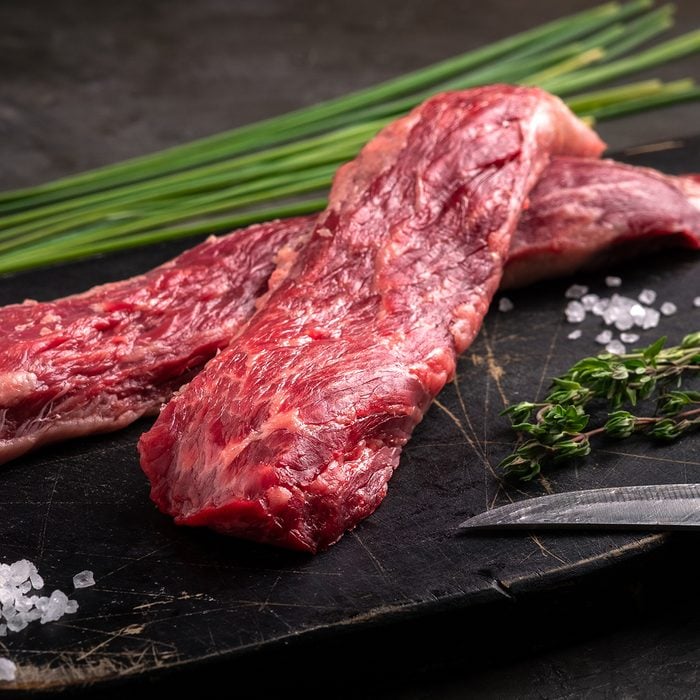
Flap Steak
Flap meat doesn't necessarily sound appetizing, but it's an affordable, versatile cut that tastes great. Sometimes called sirloin flap, this cut comes from the very bottom of the sirloin close to where it meets the flank section.
How to Cook It: You can use flap steak in any recipe that calls for skirt or flank steak. It's best when seasoned with a marinade, cooked over high heat and served around medium temperatures.
14 / 16
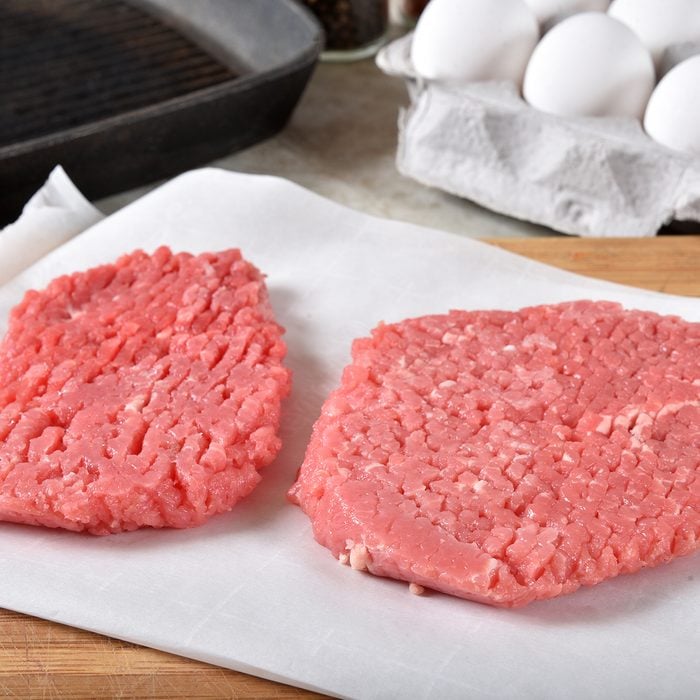
Cube Steak
Cube steak refers to a thin cut from the round section in the hindquarters. They are tenderized using a meat mallet and are sometimes scored with little cuts. This helps them cook very quickly, but it's almost impossible to cook them to any temperature other than well-done.
How to Cook It: These steaks are best-suited for chicken-fried steak: breaded and fried before being topped with gravy. The dish will taste beefy, and the gravy can cover up any dry texture.
15 / 16
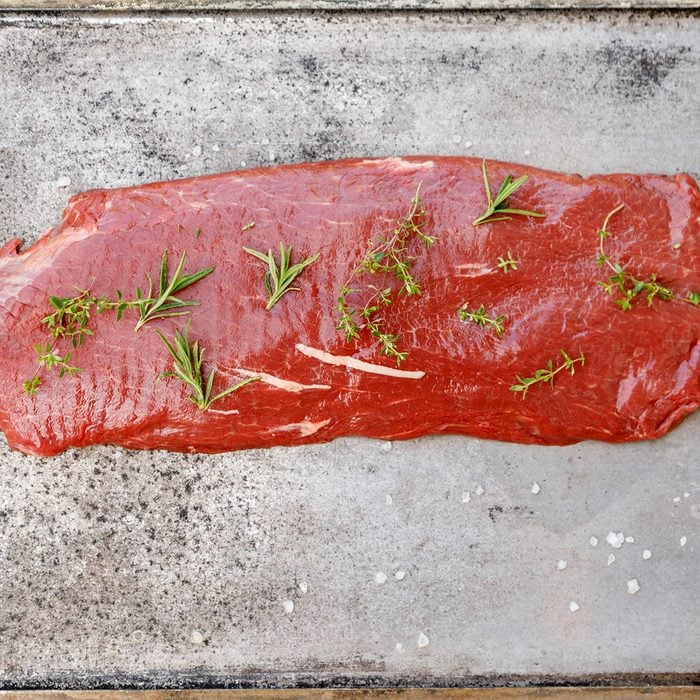
Flat Iron
The flat iron is a tender steak cut from the chuck section, the front shoulder of the beef. It's taken from the upper portion of the shoulder blade and has a triangular shape that resembles an iron. It's very tender and flavorful, although there is a tough sinew running through its middle that should not be eaten.
How to Cook It: Cook a flat iron the same way you would a filet mignon: in a hot pan or grill until it reaches medium-rare temperatures. These lean steaks make a great steak salad.
16 / 16
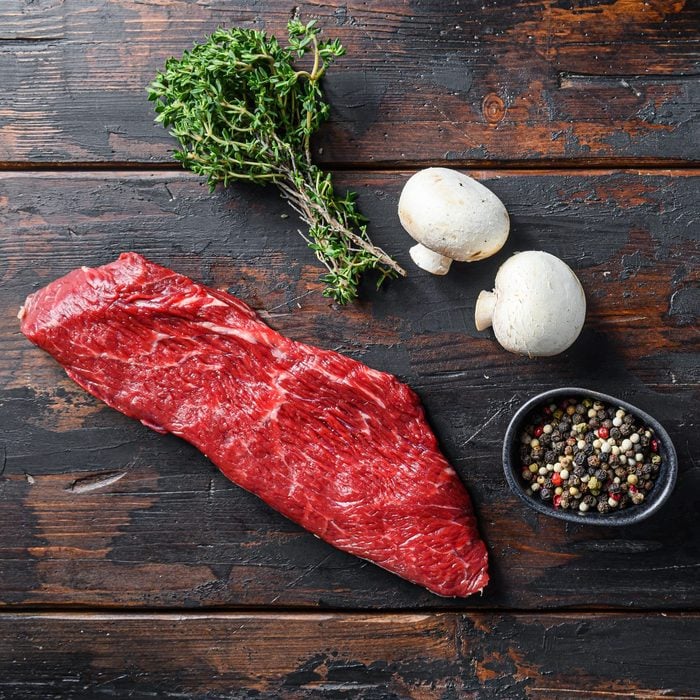
Tri-Tip Steak
Tri-tip steak (also called Santa Maria steak) comes from tri-tip roast, which is a triangular cut from the bottom sirloin. While it's perfect on the grill without any help from a rub or marinade, it's downright delicious on a ciabatta roll or marinated in beer and lime juice for steak tacos.
How to Cook It: Tri-tip steak doesn't have a lot of fat, so it's best cooked with high heat (the oven doesn't get hot enough). Cook it on the grill, under the broiler, or pan sear it in a cast-iron or carbon steel pan on the stove. After it reaches 135°F, let it rest for 5 minutes, and slice it against the grain. Learn more about how to cook tri-tip steak.
Originally Published: December 02, 2021
Source: https://www.tasteofhome.com/collection/types-of-steak-everyone-should-know/
0 Response to "List of Tenderness Different Cuts of Beef"
Post a Comment